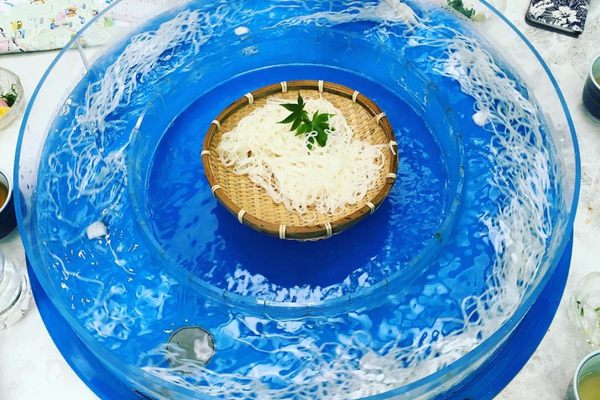Hangover cures come in all shapes and sizes: the hair of the dog, a greasy breakfast, shots of espresso, and umeboshi.
Japanese people suffering from the ill effects of alcohol swear by this gumball-sized, pickled stone fruit. Ume means “plum,” despite being a species of apricot. Consumers swear the intensely sour and salty taste makes it feel like the fruit is doing something transformative to their body.
Farmers harvest ume in June, when its acid content is highest. In traditional households, mothers and grandmothers salt, ferment, and sun-dry their ume over the course of several weeks each summer. Umeboshi’s resulting medley of acids and minerals soothes body aches, improves liver function, and—thanks to alkalinity—aids digestion. Samurai ate the salted fruit to combat stomachaches, fatigue, and hangovers.
The quintessential form of umeboshi, pickled with red shiso (perilla) leaves, comes from the Wakayama prefecture. But there are now more than 20 edible varieties. In recent years, milder, sweeter versions have become popular.
Hinomaru bentō, a bed of white rice with a single umeboshi in the center, resembles the Japanese flag. It might be the saltiest, sourest symbol of patriotism around, but it sure beats a hangover.
Written By
 rachelrummel
rachelrummel
Sources
- www.bonappetit.com/story/umeboshi-plum-hangover-cure
- books.google.com/books?id=fby2Er0seMMC&pg=PA317#v=onepage&q&f=false
- www.nakatafoods.co.jp/global/umeboshi/umeboshi.html
- www.japantimes.co.jp/life/2012/05/25/life/umeboshi-perfect-in-any-culinary-pickle/#.WgS48hNSyfc
- www.travelandleisure.com/slideshows/worlds-strangest-hangover-cures#1














